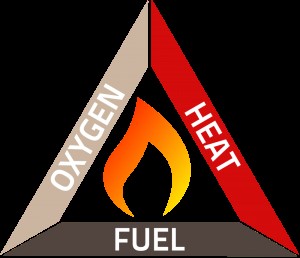
Flammability is the property which describes how easily a material burns. Non-flammable materials never burn regardless of the conditions: sand, for example, doesn’t ignite but melts into glass at very high temperatures.
Highly flammable materials, like gasoline, only require a spark to burst into flames. Wood’s flammability lies in between this spectrum.

In addition to the material’s inherent chemical ability to ignite, flammability depends on its condition, geometry, and environment. The wood fuelling our chimneys demonstrates this clearly:
- Condition: Dry wood burns much more easily than damp wood
- Geometry: 1 kg of small thin twigs burn more easily than 1 kg of a single wooden chunk
- Environment: By blowing on slightly ignited wood, we increase oxygen ventilation, thus increasing flammability by changing its environment


Leave a Reply